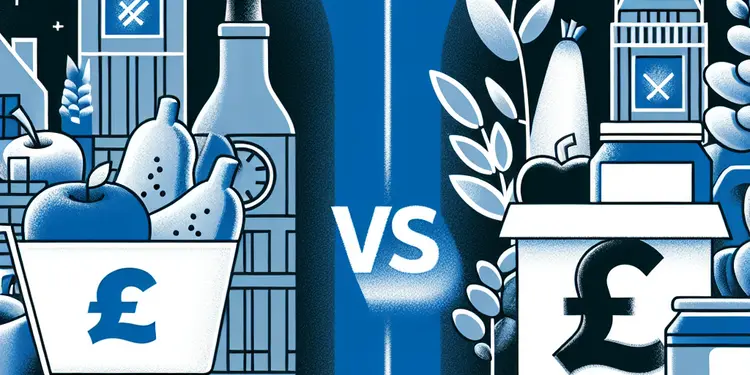
Find Help
More Items From Ergsy search
-
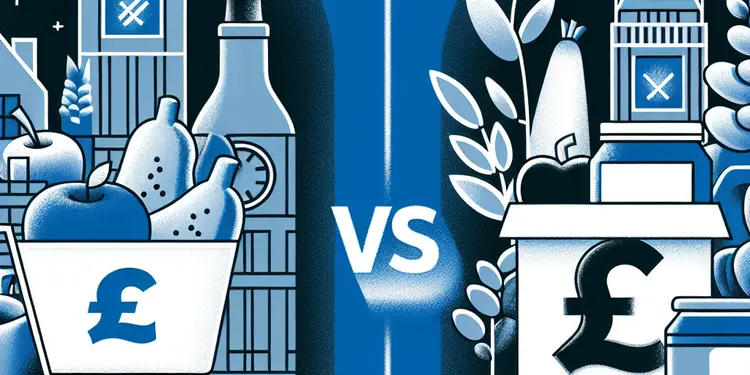
What is the difference between a food bank and a food pantry?
Relevance: 100%
-
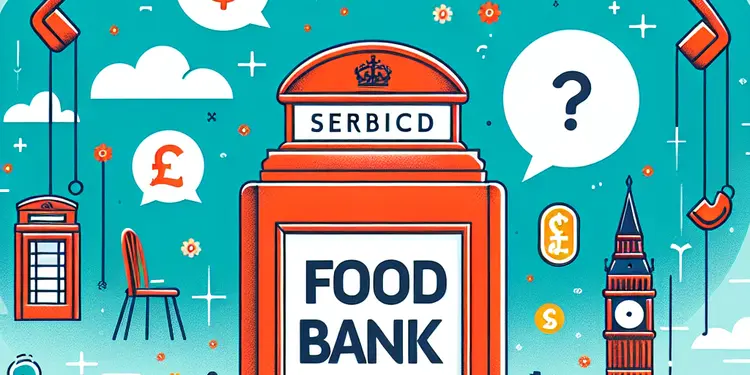
What is a food bank?
Relevance: 70%
-
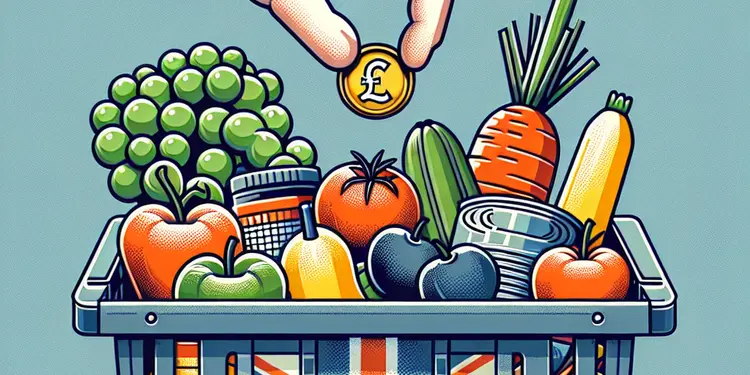
How do food banks get their food?
Relevance: 66%
-
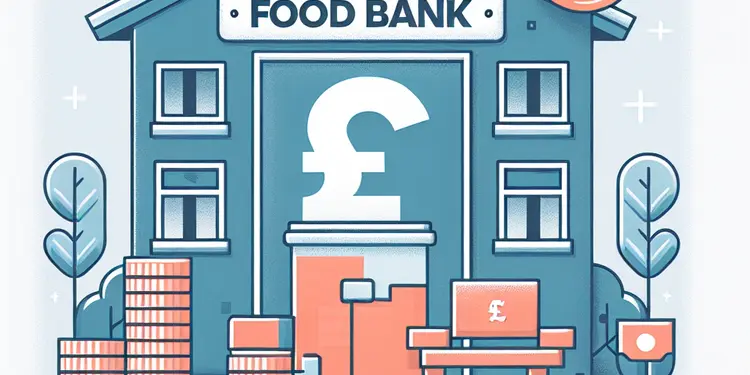
Is there a cost to receive food from a food bank?
Relevance: 64%
-
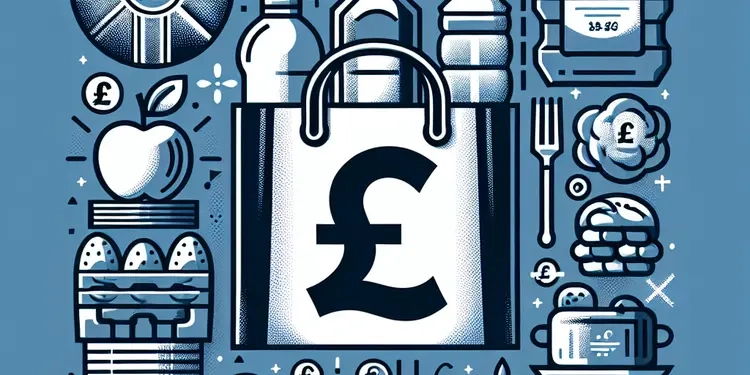
How can I access food banks?
Relevance: 64%
-

What if there is no food bank near me?
Relevance: 62%
-
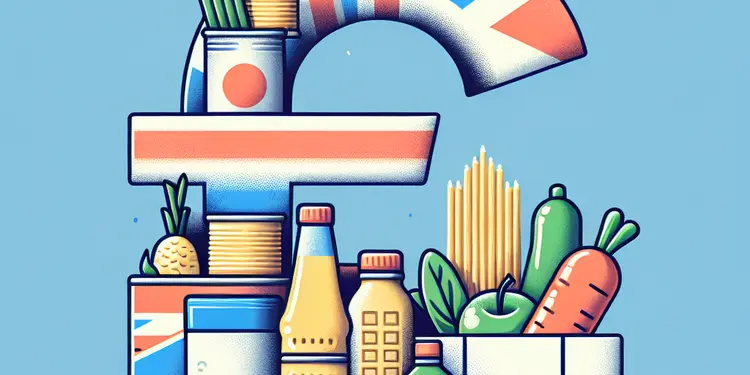
What types of food are typically available at a food bank?
Relevance: 62%
-
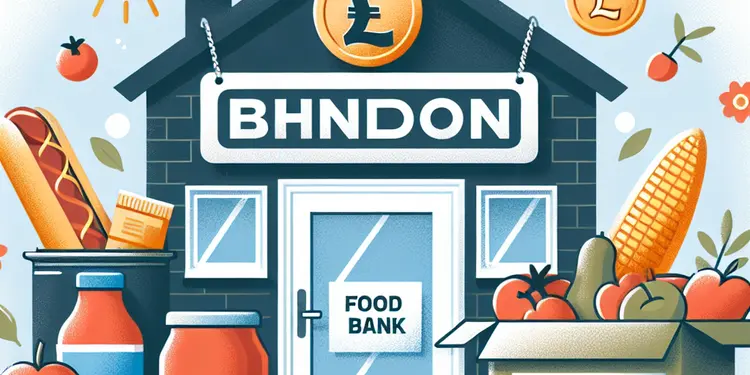
Are food banks open on weekends?
Relevance: 61%
-

Is there a limit on how much food I can take from a food bank?
Relevance: 58%
-

Can anyone use a food bank?
Relevance: 58%
-
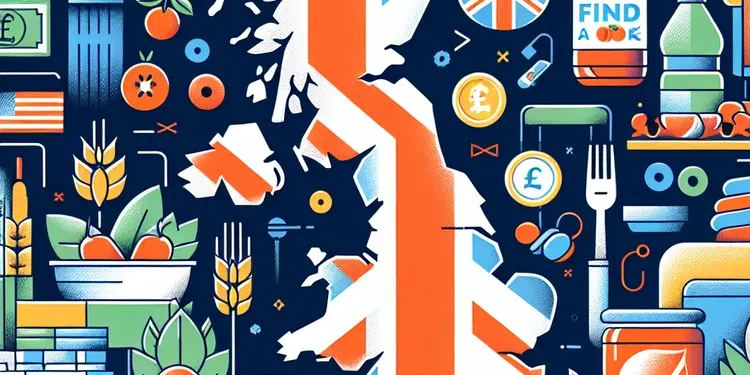
How can I find a food bank near me?
Relevance: 58%
-

How can I support my local food bank?
Relevance: 56%
-
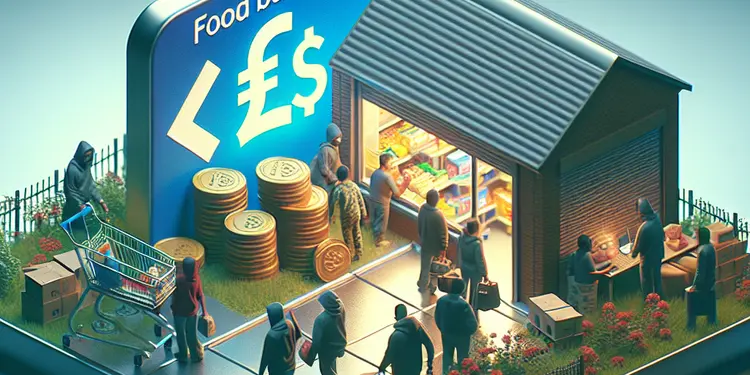
Can refugees or immigrants access food banks?
Relevance: 56%
-
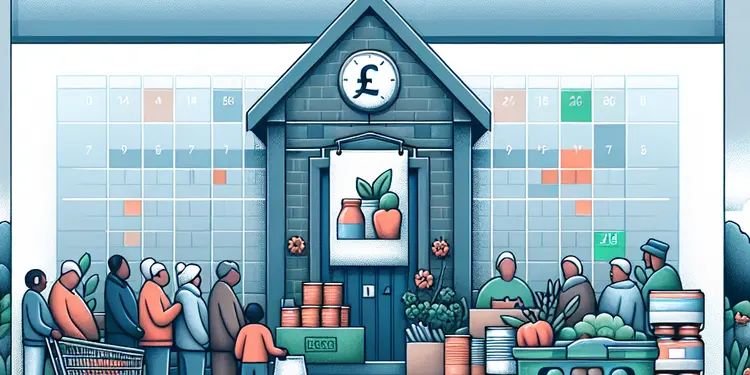
How often can I visit a food bank?
Relevance: 55%
-
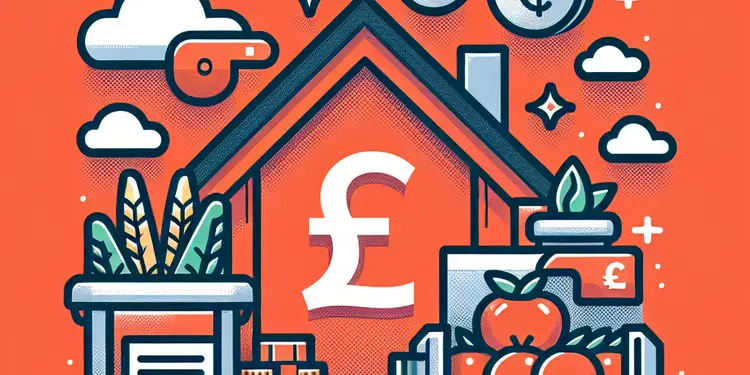
What information do I need to access a food bank?
Relevance: 55%
-
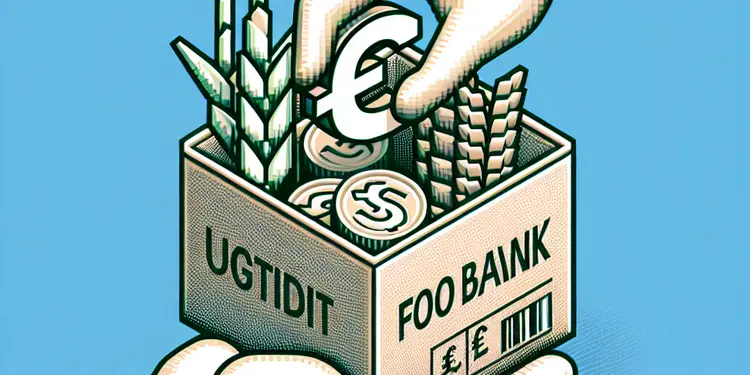
What if I can't physically visit a food bank?
Relevance: 55%
-

The Rise of Community Food Banks: Combating Hunger Locally
Relevance: 54%
-
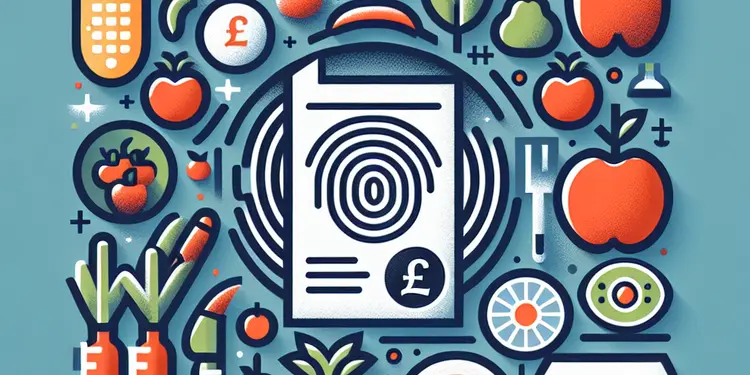
Do I have to provide personal information to access a food bank?
Relevance: 53%
-

What should I bring with me when visiting a food bank?
Relevance: 53%
-

Rise in Food Bank Usage Amid Economic Challenges
Relevance: 53%
-
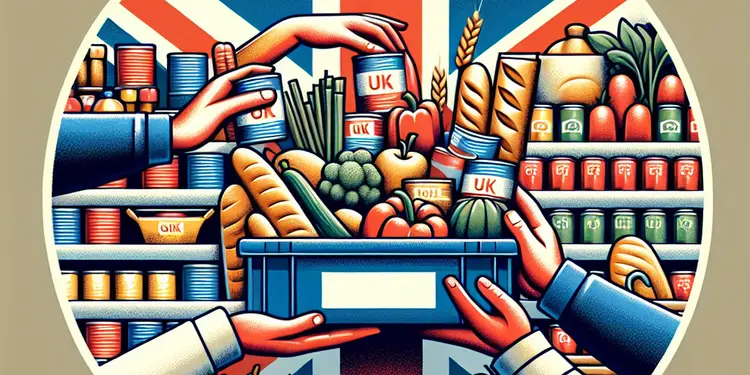
Can I volunteer at a food bank?
Relevance: 47%
-
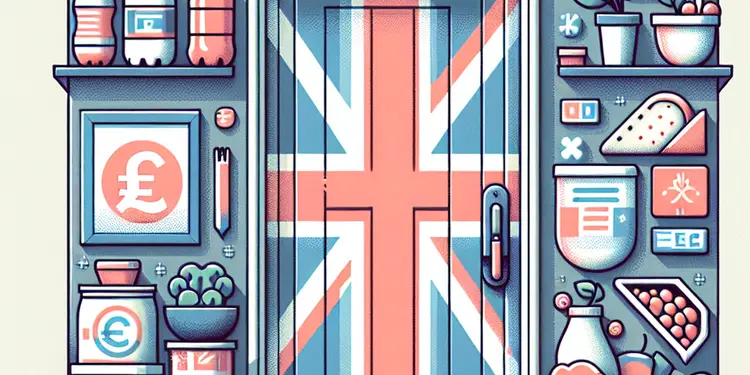
Do I need to make an appointment to visit a food bank?
Relevance: 42%
-
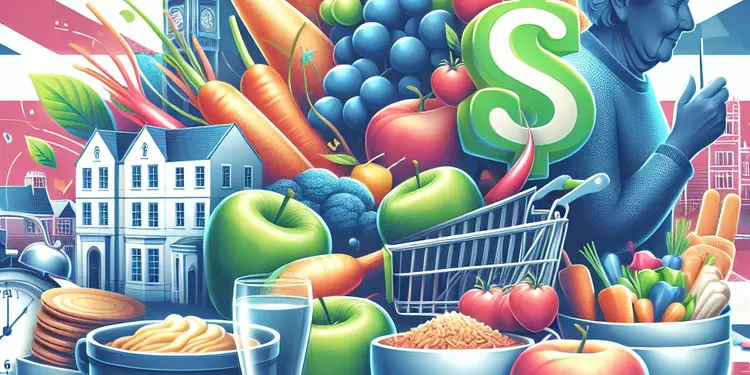
Are there any food assistance programs available for seniors?
Relevance: 42%
-

Charities Warn of Food Insecurity Amidst Rising Cost of Living
Relevance: 41%
-

Can Ozempic be taken with food?
Relevance: 39%
-

Are there any initiatives to reduce food waste in schools?
Relevance: 37%
-
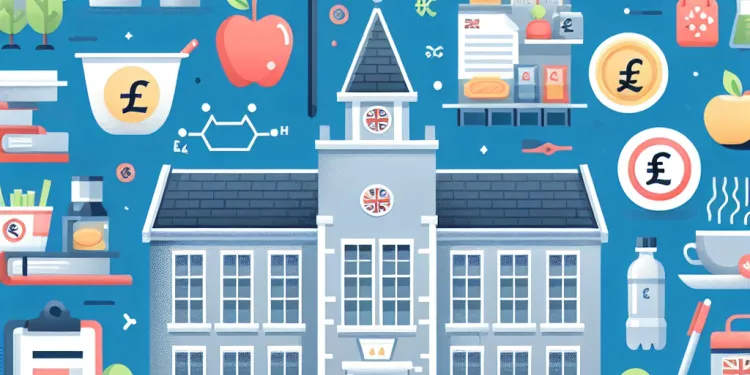
How are food allergies managed in UK schools?
Relevance: 37%
-

What foods can trigger nettle rash?
Relevance: 36%
-

Can certain foods help me stay cool?
Relevance: 35%
-

What measures are taken to ensure food safety in school meals?
Relevance: 34%
-

What foods are best to eat during a heatwave?
Relevance: 34%
-
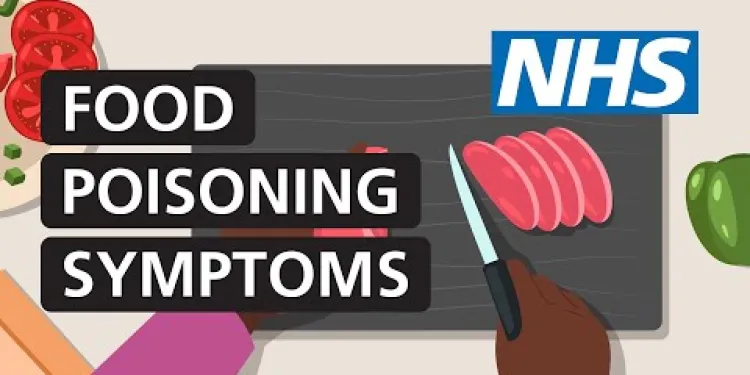
How to tell if you have food poisoning (symptoms) | NHS
Relevance: 33%
-
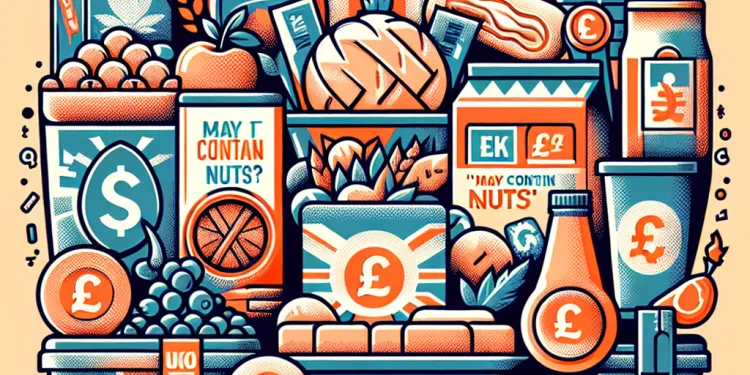
Is it safe to eat foods labeled as 'may contain nuts'?
Relevance: 33%
-

Are sugary drinks worse than sugary foods for causing tooth decay?
Relevance: 31%
-

What foods should I avoid if I have a nut allergy?
Relevance: 27%
-

Addressing the Rising Cost of Living: Community Support and Resources
Relevance: 26%
-

Can I get help with special dietary needs at a food bank?
Relevance: 26%
-

Do online banks have lower fees than traditional banks?
Relevance: 22%
-

Do online banks offer investment options?
Relevance: 20%
-
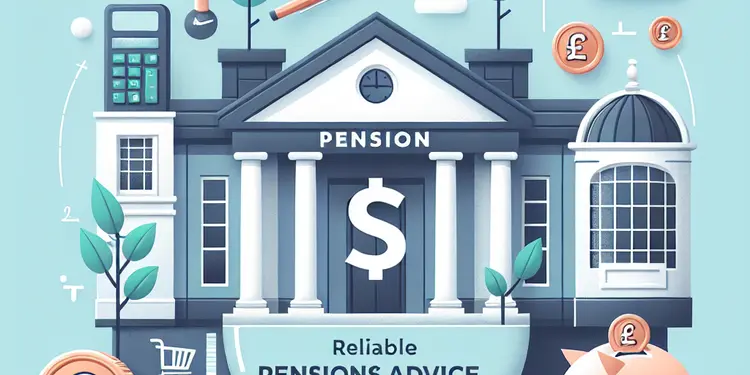
Is advice from my bank on pensions reliable?
Relevance: 20%
Introduction
In the UK, food banks and food pantries are crucial in tackling food poverty and hunger. While both aim to provide food to those in need, they operate differently. Understanding the distinctions between them is essential to appreciate their roles in the community fully.
What is a Food Bank?
A food bank is a non-profit organisation that collects, stores, and distributes food to various agencies, which then deliver this food directly to those in need. These organisations often act as large warehouses or distribution centres, gathering donations from supermarkets, food manufacturers, community donations, and other sources. The primary role of a food bank is to supply food to food pantries, soup kitchens, homeless shelters, and other community initiatives. In the UK, the Trussell Trust is the most notable food bank network, operating a vast number of food banks across the country and providing emergency food and support to people locked in poverty.
How Does a Food Pantry Operate?
A food pantry, sometimes known as a food distribution centre, is a community-based organisation that directly provides food to individuals and families in need. Unlike food banks, food pantries interact directly with the public, offering a more personalised service to those experiencing food insecurity. They operate in a variety of settings, including community centres, churches, and schools, and usually depend on food banks for their supplies. The primary goal of a food pantry is to ensure that individuals have immediate access to food in their local communities, often offering not just food, but also advice and support services.
Key Differences
The main difference between food banks and food pantries lies in their roles and operations. Food banks serve as centralised hubs that collect and channel large quantities of food to a network of distribution points, whereas food pantries are on the frontline of providing food assistance directly to those in need. Food banks typically work behind the scenes, focusing on the logistics of food collection and storage, while food pantries provide face-to-face assistance, often in a more intimate and immediate manner.
Conclusion
In conclusion, both food banks and food pantries are essential components of the UK's efforts to combat food insecurity. Their complementary functions ensure that surplus food is efficiently distributed and that families facing hunger have access to nutritious meals. Understanding the differences between these two types of organisations helps highlight the importance of coordinated efforts in the fight against poverty and hunger. Through the collaborative work of food banks and food pantries, communities can better support their residents in need, fostering a more equitable and caring society.
Introduction
In the UK, food banks and food pantries help people who do not have enough food. They both give food to people who need it, but they work in different ways. Knowing how they are different helps us understand how they help the community.
What is a Food Bank?
A food bank is a group that collects, stores, and gives food to other groups. These other groups give the food to people who need it. Food banks get food from supermarkets, food makers, and people who donate food. They act like big warehouses. In the UK, the Trussell Trust is a big group of food banks. They help many people by giving them emergency food and support.
How Does a Food Pantry Operate?
A food pantry is a place in the community where people can go and get food directly. Unlike food banks, food pantries give food straight to people who need it. They can be in community centers, churches, or schools. Food pantries often get their food from food banks. They not only give food but also offer help and advice to people.
Key Differences
The big difference between food banks and food pantries is what they do. Food banks gather and send out lots of food to different places. Food pantries give food directly to people. Food banks work behind the scenes, while food pantries meet people face-to-face.
Conclusion
In short, food banks and food pantries are both important in the UK to help stop hunger. They make sure extra food goes to people who need it. Knowing how they work helps us see why they are important in helping people and fighting hunger. By working together, food banks and food pantries can support people in need and make communities stronger.
Frequently Asked Questions
What is a food bank?
A food bank is a non-profit organization that collects, stores, and distributes food to hunger-relief organizations, such as food pantries, soup kitchens, and shelters.
What is a food pantry?
A food pantry is a distribution point where individuals and families in need can receive food directly, usually located within local communities and often operated by churches or local charities.
How do food banks and food pantries differ in their roles?
Food banks act as large storage and distribution centers that supply food to food pantries and other agencies, while food pantries directly serve the community by providing food to individuals and families.
Do food banks distribute food directly to individuals?
Generally, food banks do not distribute food directly to individuals but rather supply food to local agencies like food pantries that provide direct aid.
Can food pantries operate without a food bank?
While some pantries may source food from local donations or purchases, many rely on food banks for the majority of their food supply.
Are food banks and food pantries funded in the same way?
Both can be funded by donations, grants, government support, and fundraising, but food banks often require larger infrastructures and more funding due to their size and storage facilities.
Who typically operates food banks?
Food banks are typically operated by non-profit organizations and may have partnerships with national food bank networks like Feeding America.
Who usually runs food pantries?
Food pantries are often run by local volunteers, community organizations, churches, or local non-profits.
What type of food is found in food banks versus food pantries?
Food banks store a wide range of non-perishable and perishable food items, while food pantries distribute a selection of these items based on availability and community needs.
How are food banks and food pantries similar?
Both food banks and food pantries aim to fight hunger by providing food to those in need, and they both rely heavily on donations, volunteers, and community support.
How does the size of food banks compare to food pantries?
Food banks are generally much larger than food pantries, with more extensive storage facilities and logistics operations.
Is a food pantry a part of a food bank?
Food pantries often receive food from food banks but operate independently to provide food to individuals in their local community.
How do food banks help food pantries?
Food banks supply food pantries with food and resources, allowing them to focus on distributing food directly to people in need.
What criteria do people need to meet to get food from a food pantry?
Criteria vary by pantry, but they often include income requirements or proof of need, residency, and limits on how often assistance can be received.
Can anyone donate to food banks and food pantries?
Yes, both food banks and food pantries accept donations from individuals, organizations, and businesses.
How do volunteers contribute to food banks and food pantries?
Volunteers are crucial, helping with tasks ranging from sorting and packaging food at food banks to distributing food and assisting clients at food pantries.
Do food banks and food pantries accept perishable food donations?
Food banks often have the capacity to handle perishable food donations thanks to refrigeration facilities, while food pantries may have more limited capabilities.
Are food banks and food pantries accountable for the safety of the food they distribute?
Yes, both food banks and food pantries must adhere to food safety regulations to ensure the food they distribute is safe to eat.
Can food banks and food pantries operate digitally?
Many food banks and pantries have adopted digital tools for inventory management and client service to improve efficiency and outreach.
Why are food banks and food pantries crucial in communities?
They are vital for addressing food insecurity, providing essential food resources to individuals and families who might otherwise go hungry.
What is a food bank?
A food bank is a place where people can get free food when they need help. Sometimes people don't have enough money to buy food. They can go to a food bank to get some.
People and supermarkets give food to the food bank so that it can be shared.
If you want to know more, ask someone you trust to explain it to you.
You can also use pictures or videos to help understand. They show how food banks work.
A food bank is a place that helps people who need food. It does not make money. It gathers food, keeps it safe, and gives it to groups that help feed people. These groups are called food pantries, soup kitchens, and shelters.
What is a Food Pantry?
A food pantry is a place where people can get food if they don't have enough to eat.
You can visit a food pantry and take food home for free.
Food pantries help people who need extra help getting food.
Using picture cards or asking a helper can make it easier to understand how a food pantry works.
A food pantry is a place where people can go to get food when they need help. These pantries are in towns and cities and are often run by churches or local charities.
What is the difference between food banks and food pantries?
Food banks and food pantries help people get food. But they are not the same.
A food bank collects large amounts of food. It keeps the food safe until it is needed. Then, it sends the food to places that give it out, like food pantries.
A food pantry gives food to people who need it. People can visit a food pantry to get food for their families.
If you need help understanding, you can ask a friend or use a picture dictionary. You can also listen to someone reading the text out loud.
Food banks are like big storage sites. They keep lots of food and then give it to smaller places called food pantries.
Food pantries give food straight to people and families who need it.
Do food banks give food directly to people?
Food banks do not give food straight to people. Instead, they give food to places like food pantries. Food pantries then help people by giving out the food.
Here are some tips and tools to help you understand:
- Read slowly and take your time.
- Use a dictionary if you find a word you don't know.
- Ask someone for help if you're not sure.
Can Food Pantries Work Without a Food Bank?
A food pantry is a place where people can get free food. A food bank is a big place that gives food to many food pantries.
Yes, food pantries can work without a food bank.
Here’s how:
- They can get food from local shops.
- People in the community can donate food.
- They can have food drives to collect more food.
Tools and Tips:
- Ask your community for help. People like to help each other.
- Use posters and flyers to tell people what you need.
- Say thank you to everyone who helps. This makes them feel good.
Some pantries get food from people who give or from what they buy. But, many pantries get most of their food from big places called food banks.
Using pictures or videos can help you understand this better!
Do food banks and food pantries get money the same way?
Food banks and other places like them can get money from donations, grants, help from the government, and fundraising. But food banks often need more money because they are bigger and need big places to store food.
Who usually runs food banks?
Food banks are places that help people who don't have enough food. They give food to people who need it.
Food banks are often run by friendly and caring people. These people can be from different groups, like:
- Charities: Groups that help people in need.
- Churches: Places where people go to pray and often help the community.
- Community Groups: Groups of local people who want to help others.
- Volunteers: People who give their time for free to help run the food bank.
If you want to understand better, ask someone you trust to explain. You can also use pictures to help you learn.
Food banks are places that give food to people who need it. They are usually run by groups that do not aim to make money. They often work with big food bank groups, like Feeding America.
Who gives out food at food pantries?
Food pantries are places where people can go to get free food if they need help. Usually, kind people and groups work together to run food pantries. These can be:
- Churches: Some churches help gather and give out food.
- Charities: Groups that help people in need can run food pantries.
- Volunteers: People who want to help their community often spend time working at food pantries.
- Local Governments: Sometimes, town or city organizations help provide food too.
If you want to learn more, you can ask someone who works at a food pantry, or look up a local food pantry online for more information.
Food pantries are places where people can get free food.
Friendly people in the community help run them.
These places can be in places like churches or community groups.
Sometimes, local charities also run them.
What food is in food banks and food pantries?
Food banks and food pantries help people get food.
Food banks are big places. They hold a lot of food. They give food to smaller places called food pantries.
Food pantries are smaller. They give food directly to people.
At food banks, you might find big boxes of canned food, dry pasta, or rice.
At food pantries, you might get fresh fruit, vegetables, bread, and milk.
A helpful tool is asking a friend or using pictures to understand words better.
Food banks keep lots of food. Some food can last a long time and some food needs to be eaten quickly. Food pantries give out some of this food to people who need it. They choose what to give based on how much food they have and what people need.
To help understand this, you can use pictures of the food items or ask questions if you need more information.
How are food banks and food pantries the same?
Food banks and food pantries both give food to people who need it. They help people who do not have enough food.
Here are some ways they are the same:
- They both help hungry people.
- They get food from donations.
- They give food to people in the community.
If you need help, you can talk to someone you trust or visit a local center.
Food banks and food pantries help people who don't have enough to eat. They give food to people who need it. They get help from people who donate food, people who give their time, and from the community around them.
What is the difference in size between food banks and food pantries?
Food banks are big places. They store a lot of food and have big areas to keep it safe. They also have ways to move the food around.
Is a Food Pantry Part of a Food Bank?
A food pantry is like a small food shop. People go there to get free food when they need help. A food bank is big and keeps a lot of food to help many people. Yes, a food pantry can be part of a food bank. Food banks send food to food pantries. This way, the pantries can give food to people who need it.
Tools that help:
- Pictures: Look at pictures to understand better.
- Audio: Listen to someone reading it out loud.
- Video: Watch a video to see how it works.
Food pantries get food from food banks. They give this food to people who live nearby. Each pantry works on its own.
How do food banks help food pantries?
A food bank collects lots of food.
They give this food to smaller places called food pantries.
Food pantries help people who need food.
Here are some tools that might help:
- Use pictures to understand better.
- Talk to someone if you have questions.
Food banks give food and other things to smaller places called food pantries. This way, food pantries can give food to people who need it.
What do you need to do to get food from a food pantry?
To get food from a food pantry, you usually need to:
- Live in a certain area. Check what your local pantry requires.
- Show how much money you earn. You might need to show a pay stub or letter.
- Bring a form of ID. This can be a driver's license or ID card.
- Some places might ask about the size of your family.
If you are unsure, ask someone at the food pantry or look online for their rules. You can also ask a friend or use a helper tool if reading is hard.
Every food pantry has different rules. They might check how much money you make or if you really need help. They might also ask where you live. There could be rules on how many times you can get help.
Who can give food to food banks and pantries?
Anyone can give food! You can help by giving food to places that give it to people who need it. These places are called food banks and pantries.
If you want to give food, here are some tips:
- Check what food they need. Some foods are more helpful.
- Make sure the food is not old or spoiled.
- Ask an adult for help if you need it.
- You can also help by telling other people about food banks.
Yes, food banks and food pantries take gifts of food from people, groups, and companies.
How do helpers support food banks and food pantries?
People who want to help can do a lot for food banks and food pantries. Here are some ways:
- Sort food: Helpers put food in the right places so it is easy to find.
- Pack bags: Helpers put the right food into bags for people to take home.
- Hand out food: Helpers give food to people who come to the food bank or pantry.
If you want to help, you can find a local food bank or pantry and ask what they need. You can also tell your friends and family about it.
Tip: To make reading easier, use tools like a dictionary to understand new words or ask someone to read with you.
Volunteers are very important. They help with different jobs. Some volunteers sort and pack food at food banks. Others give out food and help people at food pantries.
Can food banks and food pantries take fresh food donations?
Food banks and food pantries help people who need food.
They usually take canned food and dry food because it lasts a long time.
Some places might take fresh food like fruit, vegetables, or bread, but you should ask them first to be sure.
Use a phone or email to ask if they take fresh food.
If you can, visit their website for more information.
Food banks can keep food that goes bad quickly because they have big fridges. Food pantries might not have as many big fridges, so they might not be able to keep that kind of food as well.
Do food banks and food pantries make sure the food they give out is safe?
Yes, food banks and food pantries have to follow food safety rules. This makes sure the food they give out is safe to eat.
Tip: Check food labels for dates and storage advice. It's important to keep food fresh and safe.
Can food banks and food pantries work on the internet?
Food banks and food pantries help people get food. They can use the internet to help too.
Here is how they can help online:
- People can sign up for food help on a website.
- They can choose food they need using a computer or phone.
- Food can be delivered to their home.
- People can ask questions and get answers online.
Tools like voice-to-text can help people who find typing hard.
Many places that give out food to people who need it, like food banks and food pantries, use computers and the internet to keep track of food supplies and help people better.
Why are food banks and food pantries important for people?
Food banks and food pantries help people who do not have enough food. They give free food to people who need it. This helps people who are hungry and cannot buy food.
The food comes from people and stores who give extra food they have. Volunteers sort and give out the food.
This is important because everyone should have enough to eat. If you need help with food, you can ask a food bank or food pantry.
If reading is hard, you can ask someone to read with you. You can also use audiobooks or apps to help understand the words.
They are very important for helping people who do not have enough food. They give food to people and families who need it, so they do not go hungry.
Useful Links
- Ergsy carfully checks the information in the videos we provide here.
- Videos shown by Youtube after a video has completed, have NOT been reviewed by ERGSY.
- To view, click the arrow in centre of video.
- Most of the videos you find here will have subtitles and/or closed captions available.
- You may need to turn these on, and choose your preferred language.
- Go to the video you'd like to watch.
- If closed captions (CC) are available, settings will be visible on the bottom right of the video player.
- To turn on Captions, click settings .
- To turn off Captions, click settings again.
More Items From Ergsy search
-

What is the difference between a food bank and a food pantry?
Relevance: 100%
-

What is a food bank?
Relevance: 70%
-

How do food banks get their food?
Relevance: 66%
-

Is there a cost to receive food from a food bank?
Relevance: 64%
-

How can I access food banks?
Relevance: 64%
-

What if there is no food bank near me?
Relevance: 62%
-

What types of food are typically available at a food bank?
Relevance: 62%
-

Are food banks open on weekends?
Relevance: 61%
-

Is there a limit on how much food I can take from a food bank?
Relevance: 58%
-

Can anyone use a food bank?
Relevance: 58%
-

How can I find a food bank near me?
Relevance: 58%
-

How can I support my local food bank?
Relevance: 56%
-

Can refugees or immigrants access food banks?
Relevance: 56%
-

How often can I visit a food bank?
Relevance: 55%
-

What information do I need to access a food bank?
Relevance: 55%
-

What if I can't physically visit a food bank?
Relevance: 55%
-

The Rise of Community Food Banks: Combating Hunger Locally
Relevance: 54%
-

Do I have to provide personal information to access a food bank?
Relevance: 53%
-

What should I bring with me when visiting a food bank?
Relevance: 53%
-

Rise in Food Bank Usage Amid Economic Challenges
Relevance: 53%
-

Can I volunteer at a food bank?
Relevance: 47%
-

Do I need to make an appointment to visit a food bank?
Relevance: 42%
-

Are there any food assistance programs available for seniors?
Relevance: 42%
-

Charities Warn of Food Insecurity Amidst Rising Cost of Living
Relevance: 41%
-

Can Ozempic be taken with food?
Relevance: 39%
-

Are there any initiatives to reduce food waste in schools?
Relevance: 37%
-

How are food allergies managed in UK schools?
Relevance: 37%
-

What foods can trigger nettle rash?
Relevance: 36%
-

Can certain foods help me stay cool?
Relevance: 35%
-

What measures are taken to ensure food safety in school meals?
Relevance: 34%
-

What foods are best to eat during a heatwave?
Relevance: 34%
-

How to tell if you have food poisoning (symptoms) | NHS
Relevance: 33%
-

Is it safe to eat foods labeled as 'may contain nuts'?
Relevance: 33%
-

Are sugary drinks worse than sugary foods for causing tooth decay?
Relevance: 31%
-

What foods should I avoid if I have a nut allergy?
Relevance: 27%
-

Addressing the Rising Cost of Living: Community Support and Resources
Relevance: 26%
-

Can I get help with special dietary needs at a food bank?
Relevance: 26%
-

Do online banks have lower fees than traditional banks?
Relevance: 22%
-

Do online banks offer investment options?
Relevance: 20%
-

Is advice from my bank on pensions reliable?
Relevance: 20%


